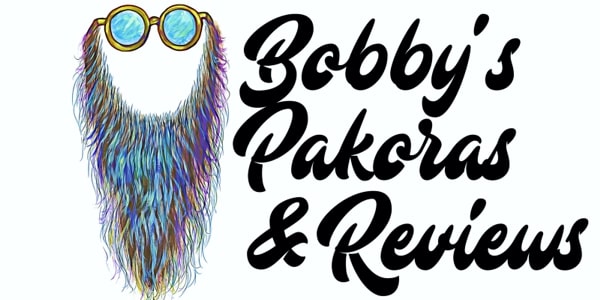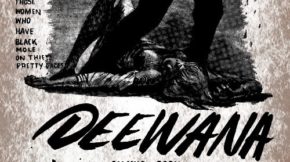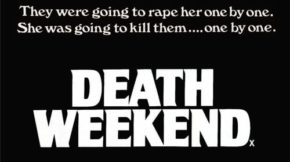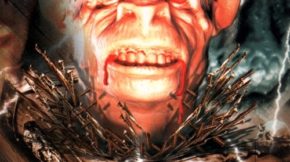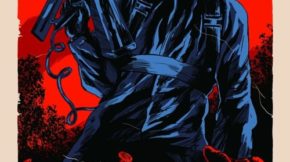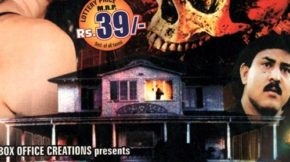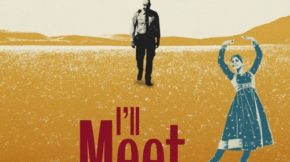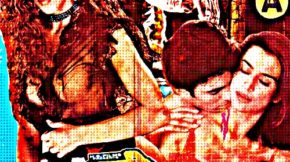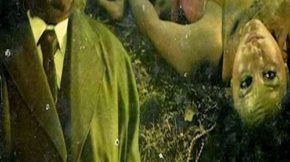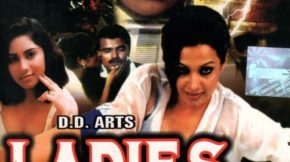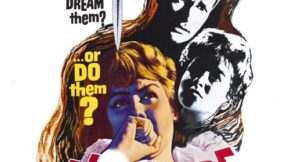Dr. Jekyll & Sister Hyde (1971)
Dr. Jekyll & Sister Hyde (1971)
Cast: Ralph Bates, Martine Beswick, Gerald Sim, Susan Brodrick, Lewis Fiander
Director: Roy Ward Baker
Nutshell: A delicious transgender twist on the old Jekyll and Hyde tale with Mr. Hyde transformed into the murderously evil Sister Hyde.
By the time the ’70s rolled around, Hammer Horror, Britain’s flagship horror production house, was floundering and gasping, just barely alive on borrowed time. The heady days of 60s had long faded into distant memories. The components that had once driven their success were now all used up and virtually redundant. Audiences in the 70s had enough of Dracula, Frankenstein, and The Mummy. Hammer seemed stuck in a cycle of rehashing these monsters over and over and over. Audiences grew disinterested.
Hammer’s horror productions had been showing diminishing returns, and the company was now desperate to somehow infuse new life into their stale and redundant showroom of Horror villains. Hammer remained determined to reinvent Dracula somehow to suit the modern era where Punk Rockers were considered far more fearful than vampires, werewolves or mummies. Hammer was determined to flog their moribund Draculas and Frankensteins until audiences stopped watching the movies altogether. Where once theatres had to turn away audiences from Hammer’s latest horror release, by the time the 70s emerged, the torrent had dried up, leaving a trickle of the old faithful. The company was sinking rapidly, but the bosses kept on striving to coax life out of their stockpile of excessively overused and overexposed material.
Such was the state of affairs at Hammer that, in effect, an after-dinner party joke by Brian Clemens about Dr. Jekyll that resulted in his summons to the Bosses office at Hammer. Boss James Carreras, very impressed by the idea that Dr. Jekyll should, instead of transforming into Mr. Hyde, turn into the deliciously shapely Sister Hyde instead. Thus the joke turned into a serious production, and Brian Clemens was on board to write the script. Roy Don Baker, considered an efficient if not particularly creative director, was signed up to helm the production with Clemens working by his side.
The film was to be titled Dr. Jekyll and Sister Hyde, and Michael Carreras has already developed some notions in his head that he wanted his director to employ. Brian Clemens had been gaining a reputation for some excellent and stylish work with The Avengers. Here, a perfect opportunity to break into cinema as well. After casting, the film went into production at Elstree Studios in the first quarter of 1971 for an October release later in the year, doubled with Blood From the Mummy’s Tomb. Sadly Hammer failed to stem the flow of their lengthening drought at the Box Office as ticket-buyers responded with almost total indifference to a movie that ranks as among the more interesting that Hammer produced over the years.
The film is also of interest because it arrived when cinematic tastes and rules were shifting significantly. The sexual revolution of the 60s led to a relaxation in the censor’s attitude to nudity. The arrival of films such as The Night of the Living Dead in the wake of the horrors of the Vietnam War also brought about changes in the way violence was allowed to a far more explicit level. With all this change swirling about Hammer Horror, previously successful franchises such as the “Carry On” movies began to lose steam.
The innuendo oriented bawdiness of the Carry On movies was rendered redundant when Deep Throat had taken porn into the mainstream (in the USA if not yet the UK). Hammer tried in vain to inject increased doses of nudity as the 70s arrived and the violence became more pulpy and graphic. It was all too late, though, as audiences fatally associated Hammer with old school horror. The new wave led by Night of the Living Dead and Last House on the Left changed the horror landscape, rendering the Hammer style campy nostalgia.
Dr. Jekyll and Sister Hyde took shape as a joke turned into a story that turned into a script that was turned into a movie. The joke made that Hammer could reinvent Frankenstein for yet another fling at the Box Office. Flogging dead horses had become the norm at Hammer and indeed precipitated and encouraged their demise. Brian Clemens realised as much as he tried to take this classic horror tale in a direction that might appear novel, and to a large extent, he succeeded.
The film has all the trademarks of a Hammer production; the swirling fog, the bawdy barmaids at the inn, the English setting, all traditional Hammer productions. This time the scene is London, and Clemens fuses some elements of infamous British crime into his storyline using a Jack the Ripper theme as his backdrop with a grisly succession of murders in the Whitechapel area of women the night. Clemens also incorporates the “Burke and Hare” body snatchers into his film to create his own Robert Louis Stevenson novel template.
The film starts with Ralph Bates on the prowl on the streets of London looking for female bodies from which to extract hormone tissue to use in his demented experiments, which he tries to justify by claiming they will prove the key to curing a whole list of terrible illnesses. His ambition matched by his zeal in his private lab within his flat. Living upstairs is the Spencer’s and young Susan, who lives with her brother and mother and has developed quite a schoolgirl crush on the mysterious but handsome Dr. Jekyll. Susan is desperate to snare the doctor and is virtually stalking him in her effort to gain his affection but Dr. Jekyll always seems to be buried in his work with hardly a moment for the world let alone a smitten young airhead from upstairs.
The Dr. is in for a rude shock when his elixir has unexpected side effects, causing him to turn into a voluptuous beauty with her own personality. When neighbours notice her, he covers up by saying it is his sister visiting him. Meanwhile, danger lurks in the inquisitive stalker who constantly scratches at the Dr.’s door like some love-struck teenager. Dr. Jekyll’s transformations into the seductive Sister Hyde grow more frequent as her personality begins to dominate his. There is some delectable humour thrown into the mix, especially in a scene when the Dr. forgets that he has transformed back into his male self and continues to flirt shamelessly with a rather shocked neighbour! The Dr. must continue to search for new bodies to feed his experiments, and Sister Hyde’s presence is indeed a commanding one. However, Dr. Jekyll uses this strange predicament to his advantage and deflects growing suspicion of being involved in the Whitechapel Murders, as it is his alluring sister who takes to the fog-bound streets, prowling for fresh victims. The killing spree goes unchecked until finally, the conflict between brother and sister for control over the one body assumes horrendous consequences. Meanwhile, Susan, the innocent young stalker, is caught in the web of horror and her survival very much as stake as the movie navigates itself through the pea soup fog to its final unravelling.
The film may lack the grandeur and style of some of Hammer’s more celebrated work from the glory days, which is only expected as budgets tightened and Hammer’s decline grew more palpable with each passing release. That said, the film was handsomely mounted, and the sets cleverly shifted about to create London’s narrow fog bound streets to good effect. Hammer’s typical pub full of bawdy humour and shameless floozies is also featured to good effect and something Hammer always did exceptionally well. Dr. Jekyll’s lab may appear a little underwhelming, especially compared to the fabulous labs of past demented dr.’s as Peter Cushing’s Baron Frankenstein in The Curse of Frankenstein.
The question has to be asked in light of his brilliant work with The Avengers if the film would have been rather more intriguing and stylish had he been asked to direct rather than Roy Ward Baker. The latter was known for efficiency and speed rather than any cinematic style or flair. To be fair, Baker has done a perfectly adequate job, and his first transformation scene is diabolically clever, considering. Brian Clemens’ somewhat subversive influence is felt in the humour of the script especially. Ralph Bates, a man groomed as the next Hammer horror star, does a fine job as Dr. Jekyll, but Martine Beswick shines most as the murderously evil and delectably seductive Sister Hyde. The supporting cast comprises seasoned British rock-solid actors, as are the design and the backdrop sets.
The double bill’s general release was equally grim as far as Box Office was concerned. Alas, when the film was released in mid-October at London’s New Victoria cinema as a double bill with Blood From the Mummy’s Tomb, they managed to sell a paltry number of tickets in the opening week ending with a dismal take of £2,376. The audience perception of Hammer Horror had changed, and the rejection of the double bill was swift and unanimous, another nail in the Hammer coffin.
In retrospect, though far from Hammer vintage, the film remains one of the more interesting of their movies of the latter years where at least there was some attempt at changing things up and a welcome injection of wry humour. For genre fans and especially fans of Hammer Horror, the film ought to be considered essential viewing, and for most of them, it should not disappoint.
Summary
A delicious transgender twist on the old Jekyll and Hyde tale with Mr. Hyde transformed into the murderously evil Sister Hyde.
Total Rating
- Dr. Jekyll & Sister Hyde (1971)
- Gerald Sim
- Hammer Horror
- Lewis Fiander
- Martine Beswick
- Ralph Bates
- Roy Ward Baker
- Susan Brodrick
